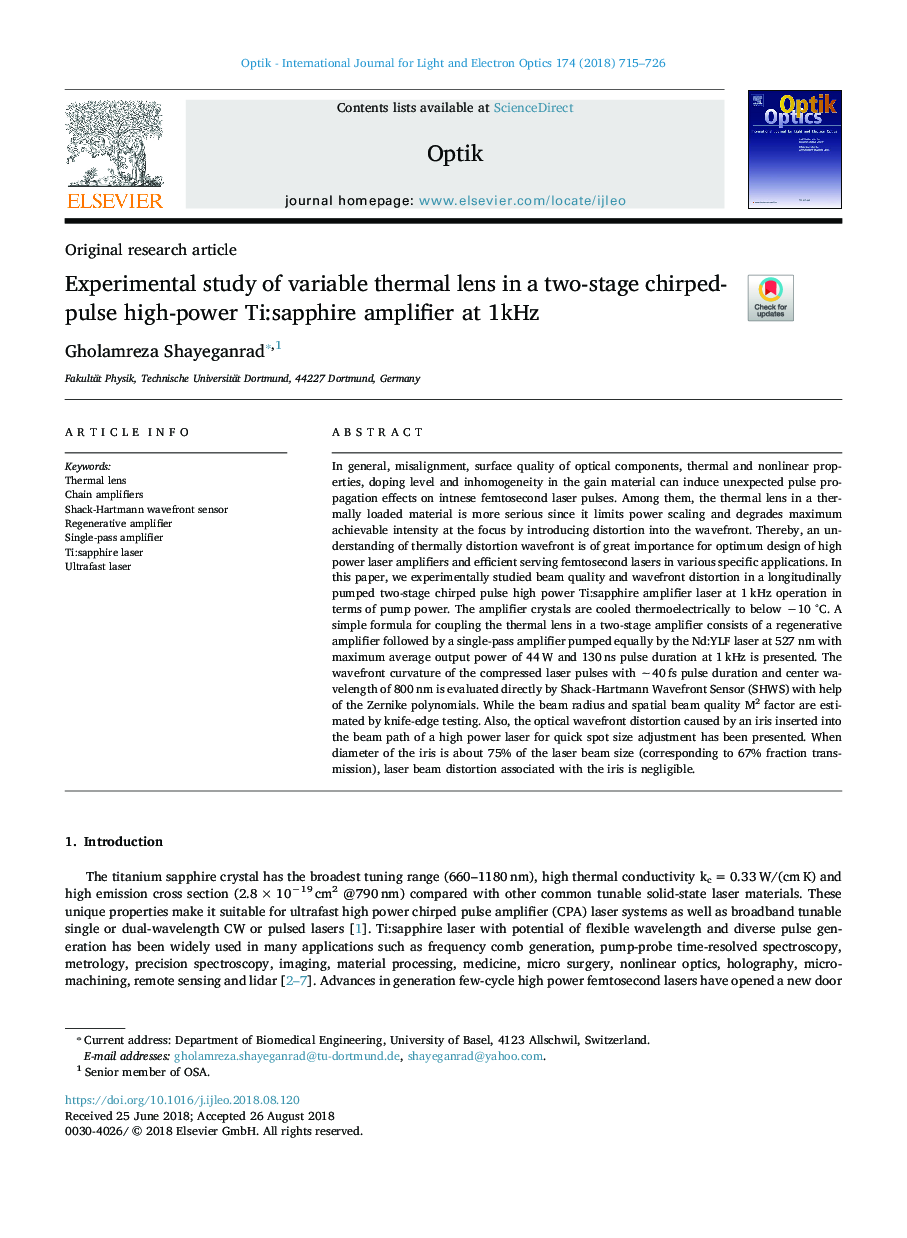| کد مقاله | کد نشریه | سال انتشار | مقاله انگلیسی | نسخه تمام متن |
|---|---|---|---|---|
| 10134333 | 1645608 | 2018 | 12 صفحه PDF | دانلود رایگان |
عنوان انگلیسی مقاله ISI
Experimental study of variable thermal lens in a two-stage chirped-pulse high-power Ti:sapphire amplifier at 1kHz
دانلود مقاله + سفارش ترجمه
دانلود مقاله ISI انگلیسی
رایگان برای ایرانیان
کلمات کلیدی
موضوعات مرتبط
مهندسی و علوم پایه
سایر رشته های مهندسی
مهندسی (عمومی)
پیش نمایش صفحه اول مقاله

چکیده انگلیسی
In general, misalignment, surface quality of optical components, thermal and nonlinear properties, doping level and inhomogeneity in the gain material can induce unexpected pulse propagation effects on intnese femtosecond laser pulses. Among them, the thermal lens in a thermally loaded material is more serious since it limits power scaling and degrades maximum achievable intensity at the focus by introducing distortion into the wavefront. Thereby, an understanding of thermally distortion wavefront is of great importance for optimum design of high power laser amplifiers and efficient serving femtosecond lasers in various specific applications. In this paper, we experimentally studied beam quality and wavefront distortion in a longitudinally pumped two-stage chirped pulse high power Ti:sapphire amplifier laser at 1âkHz operation in terms of pump power. The amplifier crystals are cooled thermoelectrically to below â10 °C. A simple formula for coupling the thermal lens in a two-stage amplifier consists of a regenerative amplifier followed by a single-pass amplifier pumped equally by the Nd:YLF laser at 527 nm with maximum average output power of 44âW and 130âns pulse duration at 1âkHz is presented. The wavefront curvature of the compressed laser pulses with â¼40âfs pulse duration and center wavelength of 800ânm is evaluated directly by Shack-Hartmann Wavefront Sensor (SHWS) with help of the Zernike polynomials. While the beam radius and spatial beam quality M2 factor are estimated by knife-edge testing. Also, the optical wavefront distortion caused by an iris inserted into the beam path of a high power laser for quick spot size adjustment has been presented. When diameter of the iris is about 75% of the laser beam size (corresponding to 67% fraction transmission), laser beam distortion associated with the iris is negligible.
ناشر
Database: Elsevier - ScienceDirect (ساینس دایرکت)
Journal: Optik - Volume 174, December 2018, Pages 715-726
Journal: Optik - Volume 174, December 2018, Pages 715-726
نویسندگان
Gholamreza Shayeganrad,